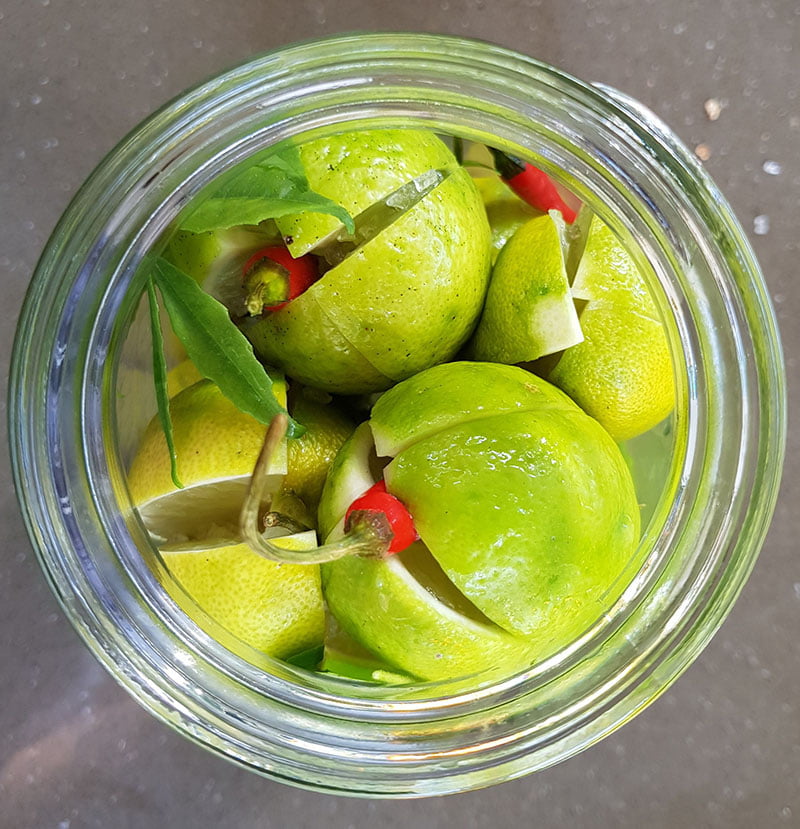
It’s citrus season in the yard again and the lime tree is going gangbusters. Experimenting with a different way of pickling limes this year, without putting them out in the sun to dry first.
They will take a good few months to mature, so in the meantime…
The Australian palaeodiet: which native animals should we eat?
‘The archaeological record suggests Aboriginal Australians had varied diets prior to colonisation, with specific prey and butchery patterns in different parts of the country. For example, in Ice Age southwest Tasmania (between approximately 40,000 and 12,000 years ago) people hunted the medium-sized Bennett’s wallaby, focusing on its larger and “meatier” hindlimbs.’
Despite my cringing at the title of the article, this looks like a fantastic project adding to our knowledge of the foodways of the first people’s in Australia and the relevance it may have in these anxious post-millennium years.
Before Farm to Table: Early Modern Foodways and Cultures
‘“Before Farm to Table will use the pervasiveness of food in everyday life as a window into early modern culture,” notes Lynch. “In the course of this project, participants will investigate big questions about the way food participates in and actively shapes human knowledge, ethics, and imagination. They will explore such issues as the unevenness of food supply, the development and spread of tastes, and the socially cohesive rituals of eating together. With fresh understandings of a pre-industrial world, this project also gives the scholarly community purchase on some post-industrial assumptions, aspirations, and challenges….Grant funding will support the hire of three post-doctoral research fellows to work with the group leaders and an array of visiting distinguished scholars, residential fellows, graduate seminar participants, and leading farmers and restaunteurs. A dedicated project coordinator is also funded by the grant.’
A $1.5 million grant…the kind of financing so many food researchers could only dream about here in Oz, let alone our libraries. But will the research shake up our understanding (groan…I don’t often get the opportunity for puns so give me license)
http://www.folger.edu/press-release-folger-receives-mellon-grant
The Sad, Sexist Past of Bengali Cuisine
‘Though the life of a bidhobha, a woman without a husband, wasn’t a reality she prepared herself for, my great-grandmother accepted this new lifestyle dutifully. Without the ingredients she once used routinely at her disposal, she cultivated her vegetarian cooking into an art of its own, full of sensory charge. My mother would go crazy for her mochar ghonto, a dry curry made with banana flower, or echorer tarkari, a gravy prepared with jackfruit. To my mother, there was little better than didar hatther ranna, cooking from the hands of a grandmother. This food was bellied with comfort and tempered with pain.’
Mayukh Sen’s story is without a doubt one of the best pieces of food writing I have read in a very long time.
https://food52.com/blog/20010-the-sad-sexist-past-of-bengali-cuisine
Impossible Foods CEO: we want to eliminate all meat from human diets
‘It’s the veggie burger that bleeds. When eaten, it tastes and feels remarkably similar in your mouth to a burger made from animal meat. After a blaze of publicity, the US-based company behind it, Impossible Foods, is scaling up production. A new facility in California will open before the end of the year with the ability to produce four million burgers a month.’
Why would anyone want to eat a vegie burger that bleeds? I have never actually understood the need to make vegetables or gluten or anything else taste like meat to get people to eat them, let alone bleed like meat. I am all for having red juice run down from my bun and stain my fingers and clothes, but a good slice or two of beetroot will do that just fine.
http://bit.ly/2v5nCbe
